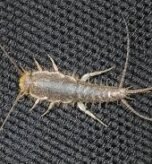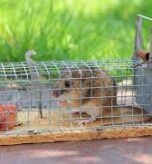While we often picture cockroaches scurrying across the floor, some species have the unsettling ability to fly. This trait can make an infestation feel even more alarming. This guide provides a professional overview to answer the question, “do cockroaches fly?” We will explore which species can fly, why they do it, the problems they cause, and effective ways to manage them.
The Truth About Flying Cockroaches
The idea that all cockroaches can fly is a common misconception. In reality, not all species are capable of flight, and even those with wings often prefer not to use them. While most adult cockroaches develop wings, their ability to fly varies. Many species use their wings for short glides or to slow a fall rather than for sustained, powered flight.
It is important to remember that cockroach nymphs (immature roaches) are always wingless and cannot fly. Furthermore, flight ability can differ between sexes. For instance, only male Pennsylvania wood cockroaches can fly, even though both sexes have wings.
Common Cockroach Species That Can Fly
Several cockroach species are known for their ability to fly or glide, making them notorious household pests.
- Smokybrown Cockroach: These are strong fliers that frequently use their wings to invade homes.
- Asian Cockroach: Known as excellent fliers, they are strongly attracted to light and are often seen flying toward lamps at night.
- Australian Cockroach: These are considered “true fliers,” capable of sustained flight over longer distances, especially in warm, humid regions.
- American Cockroach: As one of the largest species, American cockroaches can fly but typically glide for short distances when disturbed. Their flight is often erratic, which can make it seem like they are flying directly at you.
- German Cockroach: This is the most common household pest. Although they have wings, German cockroaches are not strong fliers and rarely use them, relying instead on their speed to escape.
Why Do Cockroaches Fly?
So, why do some cockroaches fly? They primarily take to the air in response to specific environmental triggers or threats.
- To Escape from Threats: First and foremost, flight is a primary defense mechanism. When a cockroach feels threatened, it may fly to get away quickly.
- To Move and Glide: They often use their wings to glide efficiently from a high spot to a lower one, like from a cabinet down to a countertop.
- In Response to Environmental Conditions: As cold-blooded insects, a cockroach’s activity level is heavily influenced by temperature. Warm, humid conditions are particularly conducive to flight.
- To Search for Resources: Cockroaches may fly to cover more ground when searching for new food sources, water, or shelter.
- Because They Are Attracted to Light: Certain nocturnal species are drawn to indoor and outdoor lights. Their attraction to light sources around or behind you is often why it seems like they are flying at your face.
The Problems Posed by Flying Cockroaches
The ability of some cockroaches to fly introduces several challenges for pest management and public health.
- Food Contamination: Flying cockroaches can easily access countertops and other elevated surfaces, spreading bacteria like E. coli and Salmonella and contaminating your food.
- Increased Difficulty of Control: Their ability to fly into homes through open windows or small gaps in siding makes them exceptionally challenging to locate and control without professional help.
- Allergic Reactions: Cockroach droppings and shed skins contain potent allergens that can trigger allergic reactions and worsen asthma symptoms.
How to Get Rid of Flying Cockroaches
Addressing an infestation of flying cockroaches requires a comprehensive and strategic approach.
1. Prioritize Sanitation and Moisture Control
Maintaining a clean and dry environment is the most fundamental step.
- Regularly clean kitchen surfaces and promptly address spills.
- Store all food (including pet food) in airtight containers.
- Fix leaky pipes and ensure proper ventilation to reduce indoor humidity.
- Regularly vacuum to remove crumbs and food particles that attract cockroaches.
2. Seal All Potential Entry Points
Meticulously inspect and seal any cracks or gaps around doors, windows, walls, and where pipes enter your home. Use caulk or weather stripping to close these entry points.
3. Utilize Baits and Traps
Baits and traps are effective tools for controlling a cockroach population. Place them in areas of high activity, such as under sinks and behind appliances. While very effective for crawling roaches, they are less so for flying ones that may not wander into them.
4. Explore DIY and Natural Remedies
- Baking Soda and Sugar: A mixture of equal parts baking soda and sugar attracts cockroaches with the sugar and kills them upon ingestion of the baking soda.
- Borax and Sugar: A mixture of one part sugar to three parts borax dehydrates the cockroach’s exoskeleton.
- Essential Oils: Natural repellents like citronella, tea tree, and peppermint oils mixed with water can be sprayed directly on cockroaches or at entry points.
- Diatomaceous Earth: This non-toxic powder can be sprinkled in areas where roaches crawl, as it damages their exoskeleton.
5. Seek Professional Pest Control
For persistent or large-scale infestations, professional pest control services are highly recommended. Experts can accurately identify the species, locate hidden nesting sites, and implement targeted, effective treatment plans.
Conclusion
So, do cockroaches fly? While not all of them do, several common species can, primarily as a means of escape or in response to warm, humid conditions. These airborne pests pose significant health risks and their mobility makes them particularly challenging to manage. An integrated approach that combines stringent sanitation, sealing entry points, and the strategic use of baits and natural remedies is essential. For severe infestations, consulting with a professional is the most reliable path to achieving a cockroach-free home.



